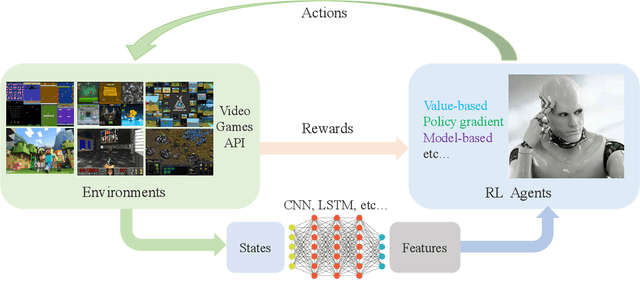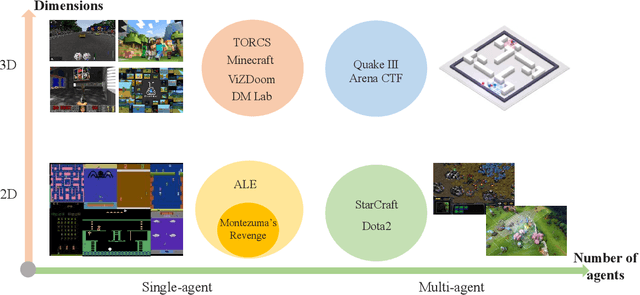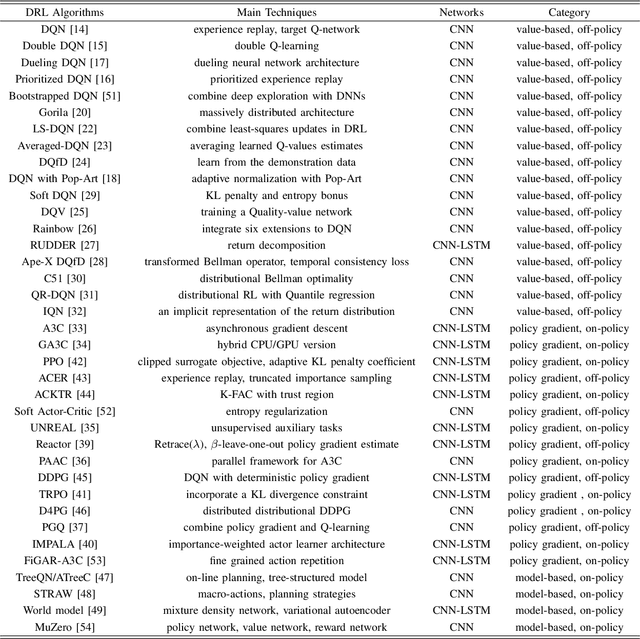A Survey of Deep Reinforcement Learning in Video Games
Paper and Code
Dec 26, 2019



Deep reinforcement learning (DRL) has made great achievements since proposed. Generally, DRL agents receive high-dimensional inputs at each step, and make actions according to deep-neural-network-based policies. This learning mechanism updates the policy to maximize the return with an end-to-end method. In this paper, we survey the progress of DRL methods, including value-based, policy gradient, and model-based algorithms, and compare their main techniques and properties. Besides, DRL plays an important role in game artificial intelligence (AI). We also take a review of the achievements of DRL in various video games, including classical Arcade games, first-person perspective games and multi-agent real-time strategy games, from 2D to 3D, and from single-agent to multi-agent. A large number of video game AIs with DRL have achieved super-human performance, while there are still some challenges in this domain. Therefore, we also discuss some key points when applying DRL methods to this field, including exploration-exploitation, sample efficiency, generalization and transfer, multi-agent learning, imperfect information, and delayed spare rewards, as well as some research directions.
 Add to Chrome
Add to Chrome Add to Firefox
Add to Firefox Add to Edge
Add to Edge